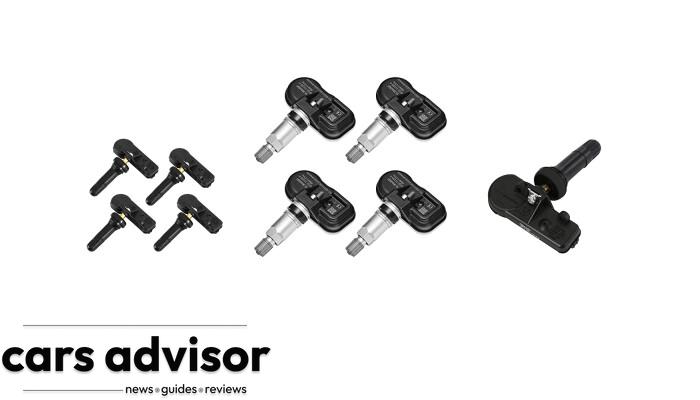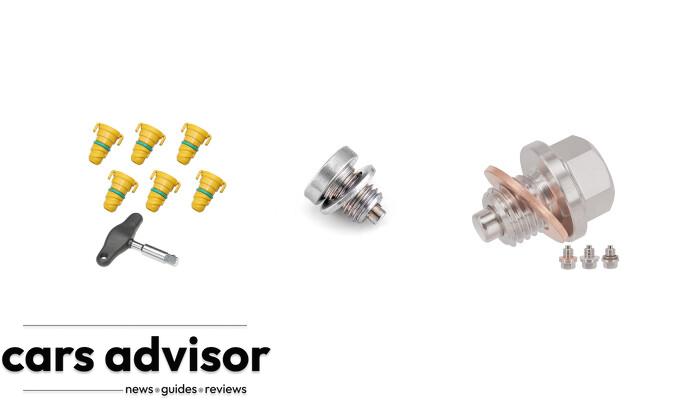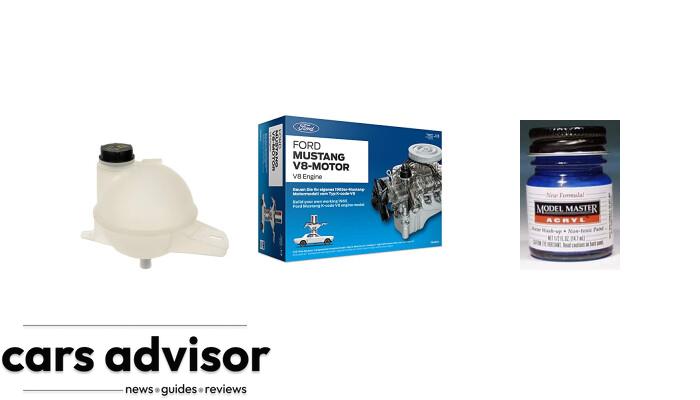Keeping your car running smoothly and efficiently demands regular maintenance, and one often overlooked component is the humble spark plug. These tiny yet essential engine parts play a crucial role in enhancing performance, fuel efficiency, and even reducing emissions.
TLDR
1. Replacing worn-out spark plugs can greatly improve a car’s horsepower and engine performance.
2. Fully functioning spark plugs help support the consistent production of optimal combustion.
3. Changing spark plugs can reduce emissions and improve fuel economy.
4. Misfiring spark plugs can lessen fuel efficiency by causing a boost in fuel consumption.
5. New spark plugs can minimize the risk of catalytic converter failure.
6. Replacing old spark plugs with new ones can improve the fuel efficiency of a vehicle.
7. New spark plugs can help a vehicle run smoother and give better gas mileage.
8. New spark plugs may even reduce the pollution level of a vehicle.
9. Regularly changing spark plugs is important for maintaining the optimal performance of a vehicle.
10. Spark plugs play a crucial role in the ignition process of a car’s engine, and their proper functioning is essential for optimal engine performance.
The Importance Of Changing Spark Plugs Regularly
Regularly changing the spark plugs in your vehicle is vital to ensure improved engine performance, increased fuel efficiency, reduced emissions, smooth start-up performance and lower risk of catalytic converter failure.
Improved Engine Performance
One of the most noticeable benefits of changing spark plugs is the improvement in engine performance. Over time, spark plugs can become worn out and less effective at generating the necessary spark for optimal combustion. As a result, your vehicle’s horsepower may decrease, making it feel sluggish during acceleration or even causing it to stall in extreme cases. By replacing old, worn-out spark plugs with new ones, you’re able to maintain a consistent level of optimal combustion within your engine.
This improved engine performance means smoother operation and more efficient use of fuel. When your ignition system functions properly with well-maintained spark plugs, the fuel mixture ignites at precise intervals leading to better power delivery from each cylinder. In turn, this results in increased responsiveness when pressing on the gas pedal – giving drivers greater control over their vehicle’s acceleration and overall handling abilities. Furthermore, regularly maintaining this critical engine component will ultimately lead to enhanced longevity for both your car’s motor and its various supporting parts. So not only does changing your spark plugs give you a better driving experience but also contributes to prolonging the life of one of your car’s most vital systems – further solidifying its importance as part of routine preventative maintenance efforts!
Increased Fuel Efficiency
One of the major benefits of changing spark plugs is improved fuel efficiency. Spark plugs are responsible for igniting the fuel in a car’s engine, and worn-out or dirty spark plugs can cause misfires that decrease gas mileage. By replacing old spark plugs with new ones, you can optimize combustion in your engine and minimize fuel consumption.
In fact, according to research from the National Institute for Automotive Service Excellence (ASE), replacing faulty spark plugs can improve gas mileage by up to 30 percent. This not only saves you money on gas but also reduces your carbon footprint by decreasing emissions that contribute to pollution.
So if you’ve noticed a drop in your car’s gas mileage or have been experiencing other issues like rough idling or difficulty starting, consider checking and potentially changing your spark plugs as part of regular vehicle maintenance. It could make a significant difference in both performance and environmental impact.
Reduced Emissions
One of the benefits of changing spark plugs is the reduction in emissions. Spark plugs play a critical role in the combustion process, which creates energy to power your car’s engine. However, over time, old and worn-out spark plugs can cause incomplete combustion and increase harmful pollutants released into the environment. By replacing old spark plugs with new ones, you will help reduce emissions and contribute to a cleaner environment.
For example, according to the National Institute for Automotive Service Excellence (ASE), regular maintenance that includes timely replacement of spark plugs can lower carbon dioxide emissions by around 2%. Additionally, by ensuring proper combustion through new spark plug installation reduces unburned hydrocarbons by up to 15%. So not only do you reap personal benefits from changing your spark plugs but so does our planet.
In conclusion, if you want to make a difference in reducing pollution levels while also boosting your car’s performance and fuel efficiency – it all starts with something as simple as changing out some old spark plugs!
Smooth Start-Up Performance
Changing your spark plugs on a regular basis can greatly improve the smooth start-up performance of your car’s engine. When spark plugs are worn out, they don’t produce enough spark to ignite the fuel/air mixture correctly, causing difficulty in starting up the engine. This can be frustrating and time-consuming, especially if you’re in a hurry or need to get somewhere quickly.
New spark plugs will ensure that your car starts smoothly every time you turn the key. With properly functioning spark plugs, there is sufficient energy for ignition to occur immediately after turning on the engine. So next time you find yourself struggling with a rough start-up, think about when was the last time you changed your spark plugs.
Regularly changing your vehicle’s spark plugs is not only necessary for optimal engine health but also beneficial for preventing costly repairs and improving overall performance. Don’t neglect this important aspect of maintenance; invest some time and effort into keeping your car running at its best!
Lower Risk Of Catalytic Converter Failure
Replacing worn-out spark plugs can significantly reduce the risk of catalytic converter failure, which is a common problem among older vehicles. A properly functioning catalytic converter is essential for reducing harmful vehicle emissions and maintaining optimal engine performance. When spark plugs are faulty or worn out, they can cause incomplete combustion, which leads to increased levels of pollutants in exhaust gases. These pollutants accumulate in the catalytic converter and eventually cause it to fail.
By regularly changing spark plugs as part of routine vehicle maintenance, car owners can help prevent costly repairs associated with a failing catalytic converter. Not only does this benefit the environment by reducing harmful emissions, but it also improves overall vehicle longevity and reliability. So if you want to avoid unnecessary expenses down the road while also doing your part for cleaner air, be sure to pay attention to your spark plug’s condition!
Signs You Need To Change Your Spark Plugs
If you notice engine misfires, rough idling, difficulty starting the engine, decreased fuel efficiency, or poor acceleration in your vehicle, it’s time to consider changing your spark plugs.
Engine Misfires
When spark plugs are worn out or malfunctioning, the engine can experience misfires. This can lead to a variety of issues, including decreased fuel efficiency and power. Here are some signs of engine misfires to look out for:
1. Rough Idling: If the engine is shaking or vibrating while idling, it could be a sign that one or more spark plugs are misfiring.
2. Trouble Starting: Difficulty starting the engine, especially in cold weather, could indicate an issue with the spark plugs.
3. Reduced Acceleration: Misfiring spark plugs can cause a noticeable decrease in acceleration and overall engine performance.
4. Poor Fuel Economy: When an engine experiences frequent misfires, it may consume more fuel than necessary, resulting in poor gas mileage.
5. Check Engine Light: A flashing check engine light is often a warning sign of engine misfires and should be addressed immediately to prevent further damage.
Regularly changing spark plugs and performing tune-ups can help prevent engine misfires and maintain optimal vehicle performance.
Rough Idling
Rough idling is a common symptom of faulty spark plugs. This occurs when the engine stumbles or vibrates at idle, and it is often accompanied by a noticeable drop in performance. It can also result in increased fuel consumption and emissions. A rough idle is typically an indication that one or more of the spark plugs are worn out, dirty, or otherwise damaged.
If you experience a rough idle while driving your vehicle, it’s important to address this issue quickly before it leads to other engine problems down the line. Replacing old spark plugs with new ones can help restore optimal combustion and improve overall engine performance. Regularly changing out your spark plugs will not only prevent rough idling but also save you money on gas and reduce harmful pollutants from entering into our environment as part of preventative maintenance for automotive repair services.
Difficulty Starting The Engine
Starting your car can be frustrating, especially when it takes multiple tries to get the engine running. If you’re experiencing difficulty starting the engine, it may be time to check and change your spark plugs. Here are some reasons why difficulty starting the engine may indicate that your spark plugs need to be replaced:
1. Worn-out spark plugs can lead to weaker sparks, which can cause misfires and difficulty starting the engine.
2. Faulty spark plugs can also reduce fuel efficiency, leading to potential problems with hard starts.
3. A buildup of carbon on the electrode of a spark plug can prevent it from producing enough sparks for efficient combustion.
4. A weak battery or failing starter motor may also contribute to difficulty starting the engine, but replacing worn-out spark plugs is an important first step in troubleshooting this issue.
5. Regularly changing your spark plugs can help avoid difficulty starting your car and ensure optimal ignition system performance.
Don’t let difficulty starting the engine ruin your day. Check and replace your spark plugs regularly as part of your vehicle’s maintenance routine to keep it running smoothly and efficiently.
Decreased Fuel Efficiency
One of the most noticeable signs that it’s time to change your spark plugs is a decrease in fuel efficiency. Misfiring or worn out spark plugs cause incomplete combustion, which leads to a boost in fuel consumption. As a result, you may find yourself refueling more frequently than usual and getting fewer miles per gallon.
According to the National Institute for Automotive Service Excellence (ASE), new spark plugs can improve fuel economy by up to 30%. When your engine has properly functioning spark plugs, it burns less fuel while producing more power. This means you’ll spend less money on gas and get better mileage per tank.
Regularly changing your spark plugs isn’t just about improving fuel efficiency; it’s also about maintaining the optimal performance of your vehicle. Neglecting this important maintenance task can lead to damage not only to the ignition system but also other engine components like the catalytic converter, costing you even more money down the line.
Poor Acceleration
Poor acceleration can be caused by worn-out or failing spark plugs. Here are some ways new spark plugs can improve acceleration:
1. They allow for consistent and optimal fuel combustion, which leads to improved engine power and responsiveness.
2. They minimize misfires and ensure that all cylinders are firing properly, which can help with quick acceleration from a stop.
3. New spark plugs can reduce carbon buildup on the engine components, allowing for smoother and more efficient fuel delivery.
4. Improved ignition timing provided by new spark plugs can help with faster acceleration and better throttle response.
Regularly replacing your spark plugs as part of your vehicle’s maintenance routine can prevent poor acceleration and ensure optimal performance of your engine.
How Often Should You Change Your Spark Plugs?
To determine how often you should change your spark plugs, it’s important to follow the manufacturer’s recommendations and pay attention to warning signs such as engine misfires, rough idling, decreased fuel efficiency, poor acceleration and difficulty starting the engine.
Manufacturer Recommendations
It’s important to follow the manufacturer’s recommendations when it comes to changing spark plugs. Generally, most car manufacturers suggest that you replace your spark plugs every 30,000 miles. However, this can vary depending on the make and model of your vehicle.
It’s also essential to pay attention to any warning signs that may indicate that your spark plugs need replacing before reaching the recommended mileage interval. These warning signs include engine misfires, rough idling, difficulty starting the engine, decreased fuel efficiency, poor acceleration, and power output.
Additionally, driving conditions can affect how frequently your spark plugs will need replacement. For example, if you frequently drive in harsh weather conditions or stop-and-go traffic regularly than expected intervals should be observed for the replacement of old spark plugs with new ones. By following these guidelines and keeping up with regular maintenance tasks like oil changes and air filter replacements too one can ensure optimal engine performance for their vehicle for years to come!
Pay Attention To Warning Signs
It’s essential to pay attention to your car’s warning signs and schedule regular maintenance for optimal performance. When it comes to spark plugs, there are some obvious signs that you need new ones. One of the most common indicators is engine misfires or rough idling, which can cause jerky driving and decreased fuel efficiency. If you’re having trouble starting your engine or experiencing poor acceleration, these could also be indications that it’s time for a spark plug replacement.
It’s important to note that manufacturer recommendations regarding spark plug replacement should always be taken into consideration. However, other factors such as driving conditions and the lifespan of your current spark plugs play a role in determining when they should be changed. Regularly scheduled vehicle maintenance can help prevent issues before they arise and ensure your car runs smoothly with improved gas mileage and reduced emissions. Don’t wait for warning signs to crop up – keep an eye on the health of your engine by checking its components regularly!
Driving Conditions
Driving conditions can have a significant impact on the lifespan of spark plugs. If you frequently drive in stop-and-go traffic, for example, your spark plugs may wear out faster due to the constant starting and stopping. Similarly, driving at high speeds or towing heavy loads can put additional strain on your engine and cause your spark plugs to wear out more quickly.
It’s important to pay attention to warning signs that your spark plugs may need to be replaced, especially if you frequently drive in challenging conditions. Engine misfires, difficulty starting the engine, and poor acceleration are all signs that it may be time for new spark plugs. By replacing worn-out spark plugs as soon as possible, you can help ensure optimal performance from your engine regardless of driving conditions.
When it comes to vehicle maintenance, changing spark plugs is one task where paying attention to driving conditions can make a big difference in how often they need to be replaced. By taking note of how you use your car and staying alert for warning signs of trouble with your ignition system, you can help minimize maintenance costs and keep your car running smoothly over the long haul.
The Lifespan Of Spark Plugs
Spark plugs are a crucial component in the ignition system of any car’s engine. While they may seem small, their impact on overall performance is significant. The lifespan of spark plugs can vary depending on several factors, including driving conditions and the type of spark plug installed.
Most manufacturers recommend changing spark plugs every 30,000 to 100,000 miles, but this varies from vehicle to vehicle. Pay attention to warning signs such as misfiring or difficulty starting the engine; these could indicate that it’s time for a replacement. Additionally, driving in harsh conditions like extreme temperatures or constantly stop-and-go traffic can shorten the lifespan of spark plugs.
Proper maintenance and regular tune-ups play an essential role in prolonging the life of your vehicle’s engine components. Changing spark plugs at recommended intervals ensures proper combustion process and fuel economy resulting in improved acceleration and reduced emissions over time. As with most preventative maintenance tasks – investing time into smaller repairs like replacing worn-out Spark Plugs now will save you money by avoiding bigger issues down the line – all culminating in keeping your motor healthy making sure it performs at its best!
Steps To Change Your Spark Plugs
To change your spark plugs, gather necessary tools and supplies, locate and remove old spark plugs, install new spark plugs, and check and adjust gap – it’s a simple process that can greatly improve the performance of your car. Read on to learn more about the benefits of regularly changing your spark plugs.
Gather Necessary Tools And Supplies
Before you begin changing spark plugs, it’s important to gather the necessary tools and supplies. Firstly, you’ll need a socket wrench with an extension bar and a spark plug socket. Make sure to get the right size for your specific vehicle as they can vary between models. Additionally, you will need a torque wrench to ensure that the new spark plugs are tightened correctly.
You should also have some anti-seize lubricant and dielectric grease on hand. Anti-seize lubricant helps prevent rust buildup on the threads of the new spark plug which can make future replacements easier. Dielectric grease is used to protect against corrosion and helps improve conductivity.
Finally, it’s always good practice to wear protective gloves and safety glasses when working under the hood of your car. Changing spark plugs involves dealing with potential hazards such as hot engine parts and electrical charges so taking proper precautions is crucial.
By having these tools and supplies ready before starting work on your vehicle, you’ll be able to complete this task more efficiently without any unnecessary trips back to the store or added stress during installation.
Locate And Remove Old Spark Plugs
When it’s time to change your spark plugs, the first step is to locate and remove the old ones. Here’s how you can do it:
1. Allow your engine to cool down completely before starting the replacement process.
2. Locate the spark plugs on your engine. On most cars, they will be located in a row along the top or side of the engine.
3. Remove any components that may be obstructing access to the spark plugs, such as plastic covers or air intake tubes.
4. Use a socket wrench with a spark plug socket attachment to loosen and remove each spark plug one at a time. Be sure not to damage any surrounding engine components when removing the plugs.
5. Once you’ve removed all of the old spark plugs, take a moment to inspect them for signs of wear or damage, which could indicate further problems with your engine.
By following these steps, you’ll be well on your way towards installing new and improved spark plugs that can help keep your car running smoothly and efficiently for miles to come.
Install New Spark Plugs
Once you’ve removed the old spark plugs, it’s time to install new ones. Before installing them, make sure you have the correct type of spark plug for your vehicle. Not all types of spark plugs work with all engines, so consult your owner’s manual or a trusted mechanic if you’re unsure.
To install new spark plugs, start by screwing them into their respective cylinder ports by hand. This ensures that the threads on the spark plug do not get stripped or cross-threaded during installation. Once they are screwed in lightly and snugly by hand, use a torque wrench to tighten them further until they reach manufacturer-recommended levels.
Installing new spark plugs is one of many preventative maintenance items that can help improve engine performance and fuel efficiency while reducing emissions from your vehicle. Make sure to check and replace your spark plugs regularly to keep your engine running smoothly and efficiently.
Check And Adjust Gap
To ensure that your new spark plugs are working properly, it’s important to check and adjust the gap. Here’s how to do it:
1. Check the gap: Use a feeler gauge to measure the gap between the center electrode and ground electrode on each spark plug. The gap should match your vehicle manufacturer’s specifications, which can typically be found in your owner’s manual or online.
2. Adjust the gap: If the gap is too wide or too narrow, you’ll need to adjust it using a spark plug gapping tool. First, gently bend the ground electrode until you achieve the desired gap size. Then, use pliers to carefully bend the center electrode if needed.
3. Recheck the gap: After adjusting the gap, double-check it with your feeler gauge to make sure it falls within your manufacturer’s recommended range.
By taking just a few extra minutes to check and adjust your new spark plugs’ gaps, you’ll help ensure that they’re working at their full potential and contributing to optimal engine performance, fuel efficiency, and emissions reduction.
Conclusion
In conclusion, changing spark plugs regularly is an essential part of maintaining the engine health and performance of your vehicle. With improved combustion, better fuel efficiency, reduced emissions, and smoother start-up performance, it’s clear that replacing old spark plugs with new ones can make a significant difference in your car’s overall functioning.
Keep an eye out for signs like engine misfires, rough idling or difficulty starting the engine to determine when you need to change your spark plugs. By following manufacturer recommendations and paying attention to warning signs, you can keep your car performing at its best for years to come. So go ahead and give your vehicle the care it deserves by ensuring that its spark plugs are always in top condition!





















